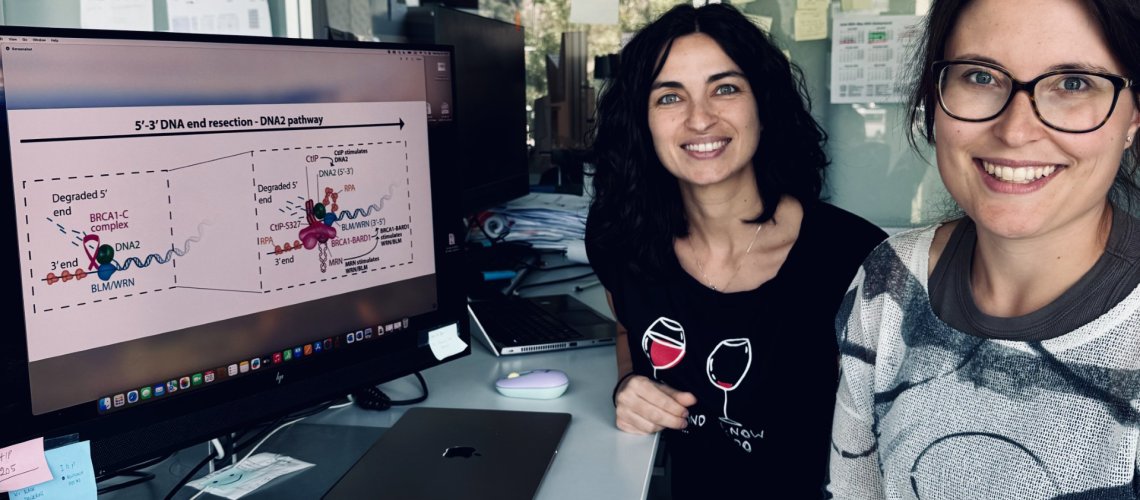Despite the known involvement of the BRCA1 protein in breast and ovarian cancer prevention, its precise function was poorly understood. A new study from the Cejka laboratory published in Nature shows that BRCA1 directly functions in DNA break repair by Homologous Recombination, preventing genetic instability.
Bellinzona – September 11 2024 – Mutations in the BRCA1 gene increase the risk of breast and ovarian cancer in females and prostate cancer in males. Despite more than 15,000 papers studying BRCA1 mutations and numerous clinical reports, the exact role of the BRCA1 protein has been poorly understood. A recent paper, published in the prestigious scientific journal Nature, provides novel insights into the BRCA1 function during the repair of broken DNA. Researchers from the Cejka laboratory from the Institute for Research in Biomedicine (Institute affiliated with USI), show that BRCA1 functions directly in the first steps of the repair process, guaranteeing the correct repair of DNA breaks without errors, preventing the occurrence of oncogenic mutations. This work was primarily carried out by Dr. Ilaria Ceppi and Dr. Maria Rosaria Dello Stritto, in collaboration with the Guérois (Institute for Integrative Biology of the cell, Paris), Huertas (Centro Andaluz de Biologia Molecular y Medicina Regenerativa-CABIMER, Sevilla), Noordermeer (Leiden University Medical Center, Leiden) and Seidel (Peter-Debye Institute for Soft Matter Physics, Leipzig) laboratories. A concurrent paper from the Sung (University of Texas), Greene (Columbia University) and Burma (University of Texas) laboratories reports similar findings in the same issue of Nature. It is hoped that a thorough understanding of BRCA1 function will help design new therapeutic strategies and understand potential resistance mechanisms of cancer cells.










